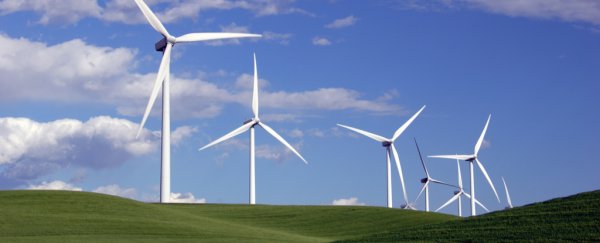On 13 May 2017, California smashed through another renewable energy milestone as its largest grid, controlled by the California Independent System Operator (CISO), got 67.2 percent of its energy from renewables - not including hydropower or rooftop solar arrays.
Adding hydropower facilities into the mix, the total was 80.7 percent. Sunny days with plenty of wind along with full reservoirs and growing numbers of solar facilities were the principal factors in breaking the record. The CISO controls 80 percent of the state's power grid.
These are also the reasons why experts believe 2017 will continue to be a record-breaking year for renewables in California. The state also set a new wind power generation record on 16 May 2017, producing 4,985 megawatts.
"It's going to be a dynamic year for records," CISO spokesperson Steven Greenlee told SF Gate. "The solar records in particular are falling like dominoes."
"The fact that the grid can handle 67 percent renewable power from multiple sources - it's a great moment, and it shows the potential we have," Center for Sustainable Energy director of policy Sachu Constantine told SF Gate.
There are plenty of races we need to avoid as humans - the arms race, for example - but the renewable energy race is one that is producing nothing but winners across the board. This isn't CISO's first win - it broke its previous record in March 2017 when it hit 56.7 percent of the day's demands with renewables.
In September 2016, a California power company contracted with Tesla to ensure Powerpacks would keep the state humming during outages. BART, the public transit system in San Francisco, is on track to be running on clean energy by 2045, and is already reducing its fossil fuel consumption.
While California is certainly leading the nation, other states and cities are following suit. Atlanta will run on 100 percent renewables by 2035, and Chicago will power all city buildings with renewables by 2025.
The Las Vegas government has them both beaten, as it's already 100 percent powered by renewables, and Nevada itself has a goal of 80 percent renewables by 2040. Massachusetts will be 100 percent renewables-powered by 2035, followed by Hawaii in 2045.
If you'd rather hear about goals that have already been achieved, New York State has increased its solar use by 800 percent. Block Island in Rhode Island has just switched entirely to wind power, shutting down a diesel plant.
In fact, experts say that the eastern United States could get 13 percent of its energy from renewables by 2025, and we've already experienced days of more than 50 percent wind power running the entire country.
Our renewable energy goals are attainable. Look what we've already done.
This article was originally published by Futurism. Read the original article.
